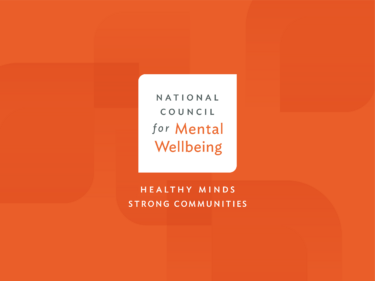“If you can’t fly then run, if you can’t run then walk, if you can’t walk then crawl, but whatever you do, you have to keep moving forward.” – Dr. Martin Luther King Jr.
During Black History Month, we focus on recognizing and celebrating the achievements, contributions and advancements of Black Americans. We’ve had to overcome the tragedies of slavery, sharecropping, medical racism, school segregation, economic suppression and Jim Crow, which have caused the socioeconomic disparities experienced by Black Americans today.
This month is rarely used as an opportunity to discuss and understand the toll of overcoming historical adversity and its long-lasting effects on our mental health. I think it’s time we start.
There is a growing public health crisis involving the mental health and wellbeing of Black youth. In 2019, Rep. Bonnie Watson-Coleman (D-N.J.) (@RepBonnie) established the Congressional Black Caucus (CBC) Emergency Taskforce on Black Youth Suicide and Mental Health. The taskforce published a report alerting that suicide rates among Black youth are rising faster than any other racial/ethnic group.
According to the National Institute of Mental Health, the suicide rate is roughly two times higher for Black youth ages 5-12, compared to their White peers. In Black youth ages 13-19, suicide rates are even more cause for concern. A recent article in the Journal of Community Health shows that from 2001 to 2017, suicide rates increased by 60% in Black male adolescents and 182% in Black female adolescents.
Despite this sharp rise in suicide rates among Black youth, very few research dollars have been allocated to address what is driving this rapid progression. The events of the past year – the COVID-19 pandemic, political unrest and increased visibility of racial injustice – may have already worsened the problem. Suicide risk factors include a disruption in routine and exposure to traumatic racial events. Given the recent upending of the lives of our youth, health organizations need to direct attention to this immediately.
My younger sister, Qeturah, is one of the Black youth who has experienced a life stressor and disruption in routine: the switch from in-person to virtual school. She is unable to see her friends and family, she’s completing her first year of high school in isolation, and she missed both her 8th grade graduation along with a class trip to Disney World. She often says it’s stressful and difficult to meet new friends and try to connect with old ones behind a screen. Qeturah has said she feels “trapped within her own thoughts,” and that her friends “feel as though they are going insane.”
For American families, school keeps kids nourished, provides extra-curricular activities and prevents social isolation. In schools, youth can also receive mental health treatment and peer support, which helps remedy the inexplicable trauma they face. The transition to virtual school has magnified the disparities in access to mental health treatment for Black youth.
Due to a lack of access to mental health services within their communities, as a result of systematic disinvestment within Black neighborhoods, Black youth frequently receive treatment in a school-based setting. Now that schools are virtual, this has resulted in additional barriers to treatment, such as access to reliable internet and privacy concerns. While schools cannot shift back from virtual to in-person just yet, there are many ways institutions can support the mental health of Black youth right now:
- Address and remedy decades-long disinvestment in Black communities, including addressing food insecurity, lack of affordable housing and public parks, and increasing public school funding.
- Increase funding and resources for Black researchers who focus on Black youth mental health, including the amount of local, state and federal funding to support research into topics relating to Black youth mental health and suicide risk factors and prevention.
- Increase awareness and outreach programs in Black communities to eradicate the negative stigma associated with mental health, so Black youth understand and recognize when they need mental health support.
- Implement Mental Health First Aid training (a public education program that helps participants understand mental illness, seek timely intervention and save lives) for school and community leaders.
- Provide greater accessibility to quality and affordable mental health treatment clinics, such as Certified Community Behavioral Health Clinics (CCBHCs).
- Train mental health providers in trauma-informed, resilience-oriented and culturally competent care.
Our youth are the future leaders and change-makers of our society. By making a commitment to pledge more research funds, provide equitable access to culturally competent treatment and teach families to know the risk factors of suicide, we can save Black lives.
If we take these steps now, we can make a world of difference. This Black History Month, let’s honor how far we’ve come by giving our youth the strength to go even further.
Visit our Health Equity & Racial Injustice page to learn more, access resources and download tools!
Guest Author
Project Coordinator
Practice Improvement and Consulting


